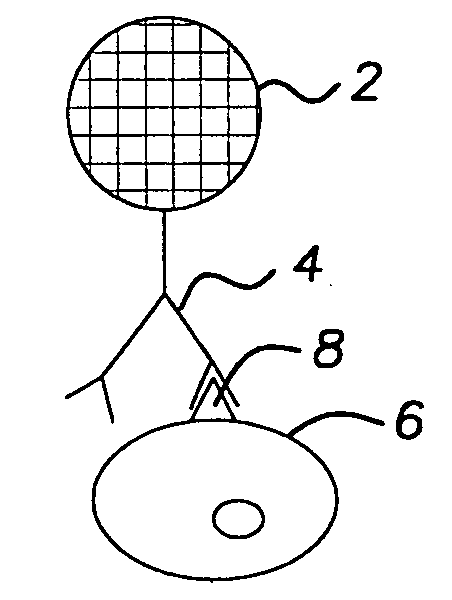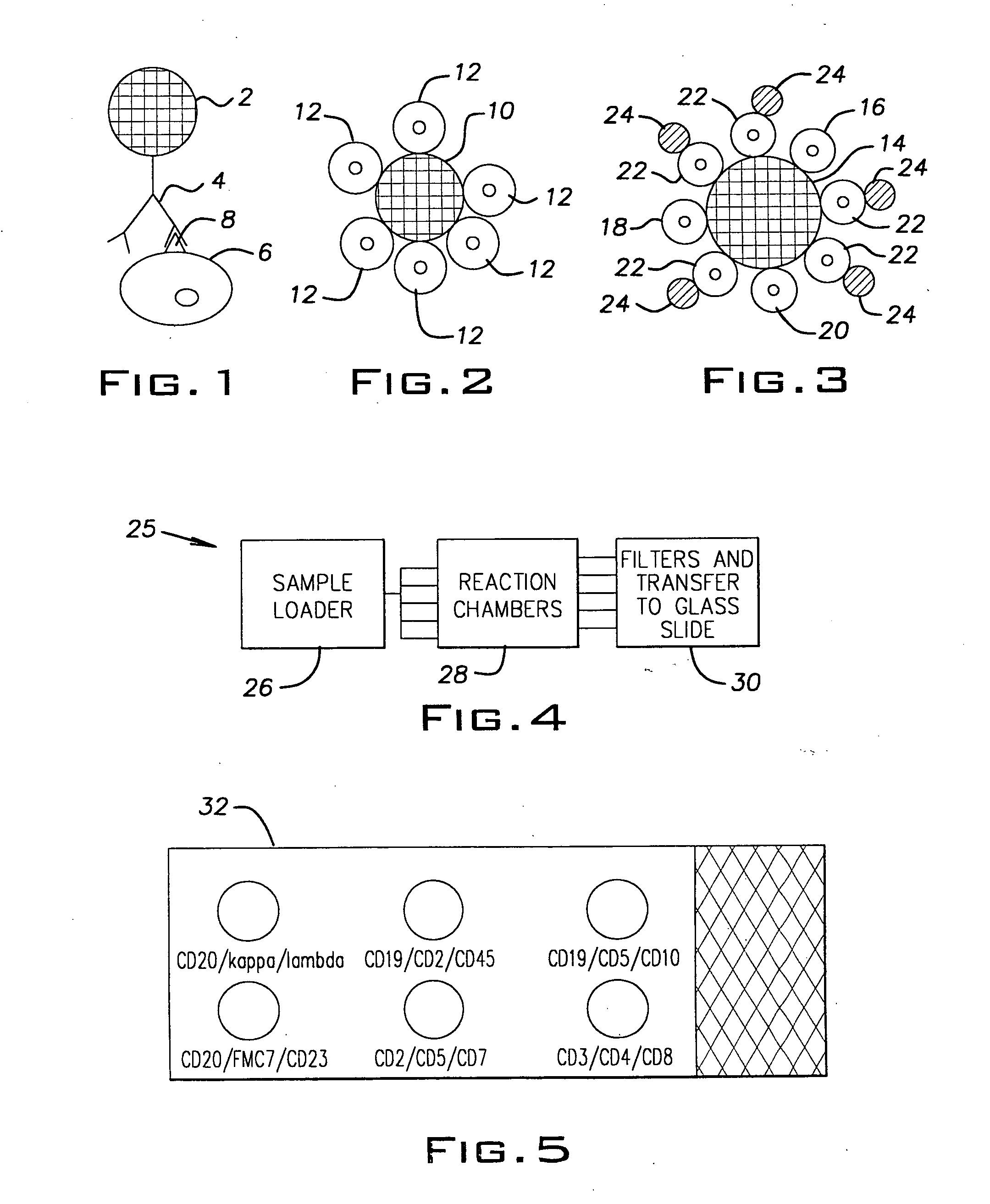Products and methods for single parameter and multiparameter phenotyping of cells
- Summary
- Abstract
- Description
- Claims
- Application Information
AI Technical Summary
Benefits of technology
Problems solved by technology
Method used
Image
Examples
example 1
[0049] A 30 year old man presented with pancytopenia and splenomegaly. Examination of the peripheral smear confirmed the pancytopenia. In addition, scattered cells were present that showed bland cytological characteristics, with a monocytoid appearance. The nuclei of these cells were round to oval, with a single intermediate nucleolus. There was abundant blue-gray cytoplasm that showed numerous cytoplasmic projections. A bone marrow examination revealed a hypocellular aspirate with similar cells present. Small clusters of abnormal cells were present on the core biopsy. A buffy coat sample of the peripheral smear was suspended in anti-CD20 coated 10-micron colorless beads to distinguish the abnormal cells from monocytes. The suspension was passed through an appropriate filter and the cells were then transferred to a glass slide and stained. A schematic of the resulting slide preparation is demonstrated in FIG. 2. Positive binding of the abnormal cell population to the 10-micron beads...
example 2
[0050] A 68 year old man with a known history of chronic lymphocytic leukemia (CLL) presented for routine follow up examination. Clinical examination revealed that the patient had a peripheral white cell count of 435,500 cells / ml (normal range 4,300-11,000 cells / ml) which included 87% lymphocytes. Morphologic examination of the peripheral blood smear revealed predominantly an abnormal population of small lymphocytes with a small but significant population of large transformed cells. A suspension of cells in a liquid medium was provided. This sample was analyzed using anti-CD20 coated 10-micron beads, anti-kappa coated colorless 5-micron beads and anti-lambda coated colorless 5-micron beads in two separate tubes. In the procedure, the same sample was placed into each of 2 tubes. To each tube was added anti-CD20 coated 10-micron beads. These strongly bound the B cells. The question then was whether the B cells were kappa, lambda or a combination of both. Therefore, the 5 micron anti-k...
example 3
[0051] A 19 year old man presented with headache and stiff neck to the emergency. His evaluation included obtaining a sample of cerebral spinal fluid for which emergency pathologist evaluation of the fluid was requested to rule out the presence of “blasts”. Evaluation showed a relatively uniform population of small lymphocytes, and a diagnosis of viral meningitis was suggested. The patient's physician requested flow cytometry to completely rule out the possibility of malignancy. Since excess fluid was available, a small sample was treated with anti-CD20 coated 10-micron beads and anti-kappa and anti-lambda coated 5-micron beads in two separate tubes using essentially the same procedure as described in Example 2 above. The majority of cells did not bind to either the anti-CD20, anti-kappa, or anti-lambda beads, suggesting that the lymphoid population was composed predominantly of T cells. Flow cytometric analysis received two days later confirmed approximately 60% T cells and 40% B c...
PUM
| Property | Measurement | Unit |
|---|---|---|
| Pore size | aaaaa | aaaaa |
| Pore size | aaaaa | aaaaa |
| Diameter | aaaaa | aaaaa |
Abstract
Description
Claims
Application Information
 Login to View More
Login to View More - R&D
- Intellectual Property
- Life Sciences
- Materials
- Tech Scout
- Unparalleled Data Quality
- Higher Quality Content
- 60% Fewer Hallucinations
Browse by: Latest US Patents, China's latest patents, Technical Efficacy Thesaurus, Application Domain, Technology Topic, Popular Technical Reports.
© 2025 PatSnap. All rights reserved.Legal|Privacy policy|Modern Slavery Act Transparency Statement|Sitemap|About US| Contact US: help@patsnap.com


